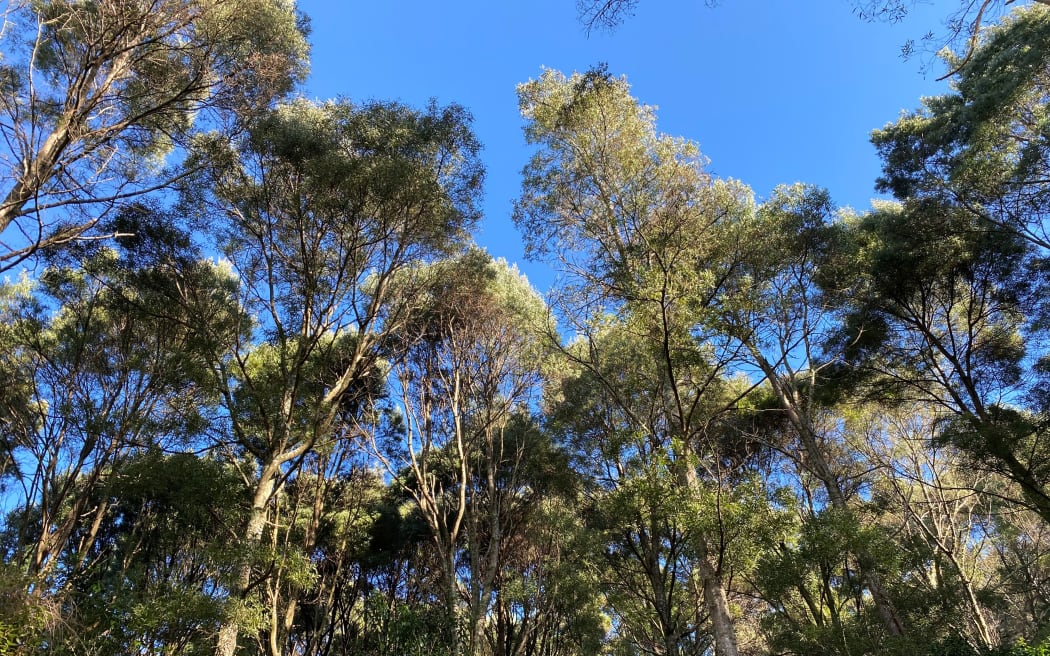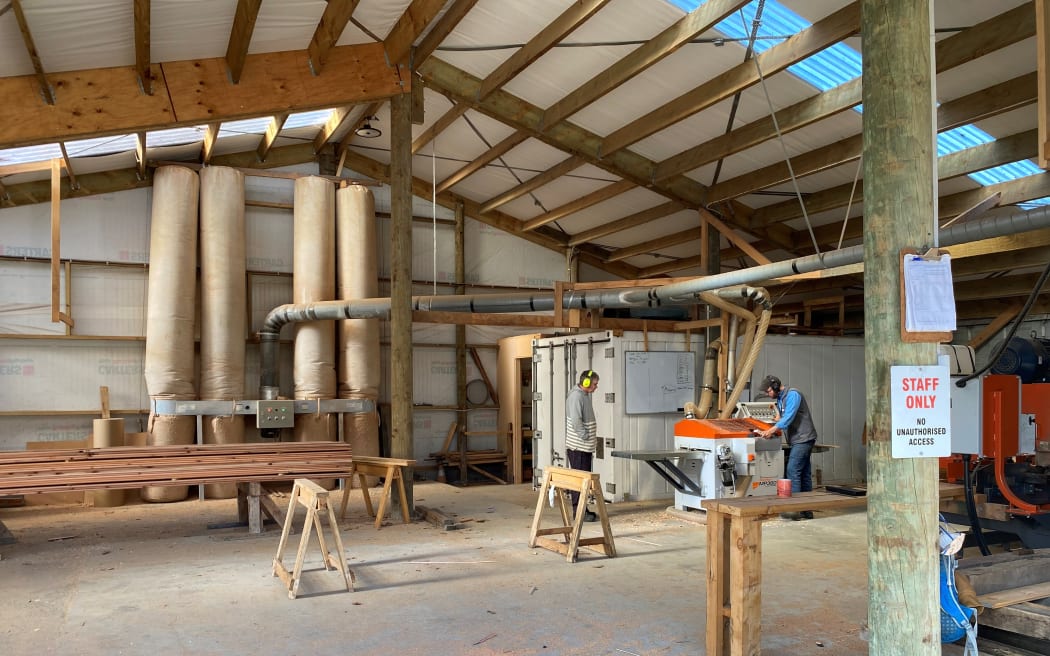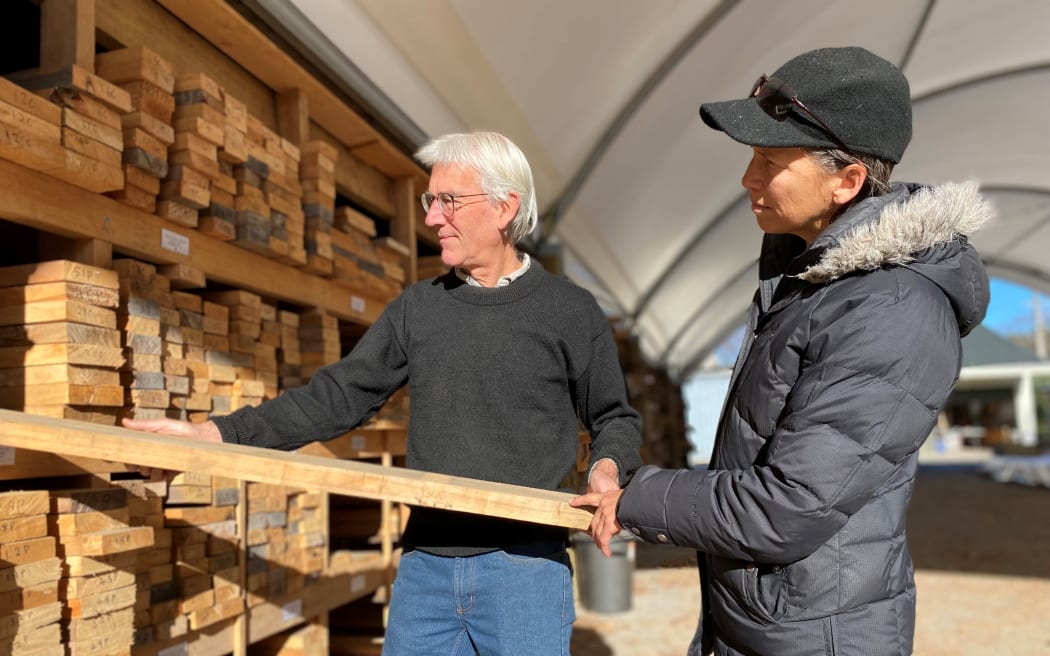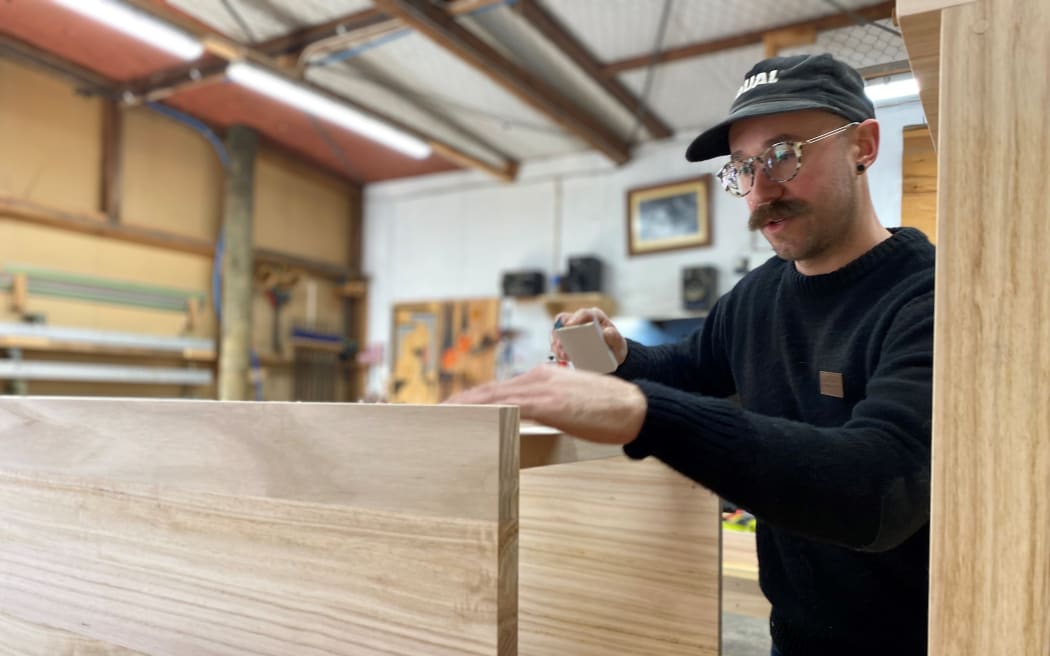Walking on what was once a steep eroded hillside behind Whanganui, Richard Thompson reflects on the effort it took to create a continuous canopy forest of alternative species.
“We started planting this forest in 1991 so now it's 32 years old some of the older plantings. There have been times I have been walking through here thinking ‘Gosh we planted these trees and now they're well above my head’ creating an amazing canopy.
“To be able to actually then turn around and harvest usable timber out of it, we have achieved something quite amazing.”

Papaiti Forest is a continuous canopy forest of alternative species in Whanganui. Photo: RNZ/Leah Tebbutt
Thompson, alongside his wife Laurel, planted the 16-hectare block with alternative “exotic” species of trees such as macrocarpa and blackwood initially before adding more species such as silver wattle and poplar to the mix.
He explains that the term alternative species really means anything aside from pine.
Twenty-five years after planting, production thinning was needed but Thompson ran into a problem.

The machining shed where cladding and other products are made. Photo: RNZ/Leah Tebbutt
“I didn’t really have anyone to sell these logs to. I needed to think of a way to get value from these trees that we had grown all this time and didn't like the idea of just cutting them to waste and leaving them to rot.
“After looking around to find a mill, in the end, I decided to buy a [portable] mill. Then needed somewhere to store the timber and one thing lead to another and MacBlack essentially grew from that.”
MacBlack is a timber merchant located in the Whanganui township, a 15-minute drive from the Papaiti forest.

Photo: RNZ/Leah Tebbutt
Thompson describes it as a vertically integrated business that started with the trees and the process of turning trunks into timber. In the eight years it has been established, the business has developed into creating paneling and flooring, and more recently a joinery workshop.
Thompson is one of few timber merchants in the country that deals solely with locally grown exotic timber.
He says while the market exists in New Zealand, it is not fully established.

Chris the joiner sanding down a eucalyptus vanity in the joinery workshop. Photo: RNZ/Leah Tebbutt
“One of the problems is there is not a lot of familiarity in New Zealand for these alternative species. Everyone knows matai and rimu and totara, most of us have grown up with them, they're in our houses. But we are no longer cutting them to any great degree.
“So there is a gap for what are we going to use instead and that is essentially what we are doing is growing species to substitute those native timbers so we can grow our own high-quality timbers and use them for really top-notch uses and not have to import timber from other parts of the world.”
Thompson says the opportunity to grow and process these timbers in New Zealand is nascent and needs more development.
“It is one of these chicken and egg things. Growers need confidence that there is a market for their logs and similarly, people supplying that timber need to know they can find that timber and its readily available.
“So you need both ends of that market to be developed and it does take time.”


